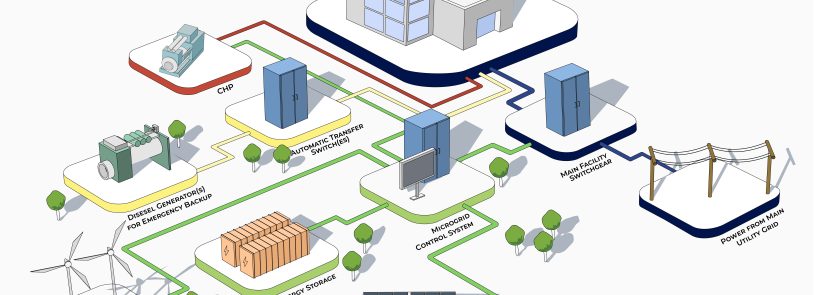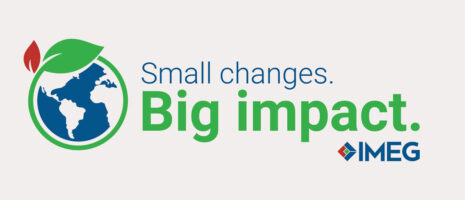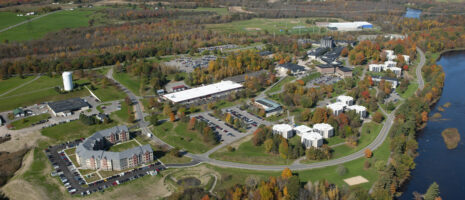Podcast: Taking emergency power beyond code and beyond carbon

What is a microgrid? What are its benefits? Does it offer a good return on investment? Answers to these questions and more are discussed in an IMEG podcast featuring Eric Vandenbroucke, IMEG Vice President of Healthcare, and Mike Zorich, IMEG’s COO and previous healthcare director.
“A microgrid is a collection of power sources in addition to your normal utility source,” explains Eric. “It could include things like a generator, solar power, wind turbines, battery backup. It’s a collection that is able to be decoupled from the grid if you have a power surge or problems with the grid (occurring more frequently due to weather-related events), allowing you to continue operating your facility.”
Microgrids are especially beneficial for healthcare facilities and buildings in other markets that require 24/7 uninterrupted operation. They go beyond code-required emergency power, can operate for an unlimited amount of time, and provide carbon-free energy. “Another consideration with microgrids is decarbonization in healthcare,” says Mike Zorich. “We saw a big push from the Biden administration with the goals of 50 percent carbon reduction in healthcare by 2030 and then zero emissions by 2030. A microgrid is not the only path to decarbonization, but it needs to be part of that discussion.”
Despite a microgrid’s potential, Eric adds that many are not familiar with the strategy. “There have been some recent surveys stating that over half of healthcare facility managers aren’t even familiar with what a microgrid is and about another third of them admit they’re only somewhat familiar. So, I think education is going to be the first step in figuring out if this is something that might fit with your organization.”
Listen to the podcast to learn more, and download IMEG’s free executive guide, “Microgrids for Healthcare Facilities: ‘Island Mode’ Ensures Long-term Operability.”












